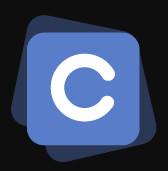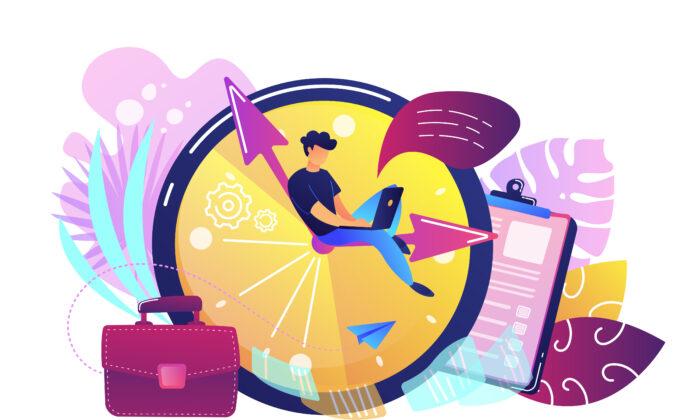The earliest known form of the to-do list was recorded in 1791 by Benjamin Franklin. Lists are still popular, but digital productivity tools are becoming increasingly important. In addition to Google Calendar, you might use Slack, Zoom, Trello, Asana, or Jira as part of your task-management system.
- Time tracking
- Project management
- Delegation
- Automation
- User behavior analytics
- Keystroke logging
In Short, These Tools Certainly Serve a Purpose
And, even better, they’re packed with advantages. Mainly the fact that these tools can assist with time and project management. For instance, time tracking tools or employee monitoring software can see when and where you or your team are wasting valuable time. Knowing this can help prevent distractions and create more realistic schedules.Tools for Productivity Aren’t Meant to Do Your Job for You
Most productivity tools do as promised. Take Todoist as an example. In Todoist, you can organize your tasks by project and record them. Think of this as an upgraded to-do list. Besides recording and organizing your own tasks, the app lets you share and assign tasks with others.Here’s the thing, though. The app isn’t going to generate a to-do list for you. That’s on you. It’s like wanting to step up your cooking game by buying a shiny, new cookware set. Even though you have all the right equipment, the meals aren’t going to cook themselves.
Searching for Tools Is Unproductive
Looking for an app or tool to make you productive? There’s an app for that. Even though having various options is nothing to sneeze at, it can be challenging to find and settle on the right one.In addition, tools with premium features make things more challenging. Why? It’s impossible to decide whether to use an app based on the free features it offers.
Moreover, the pursuit of better productivity tools will leave you with many options to choose from, which could be overwhelming. And you may not be satisfied with any of them.
There May Be a Learning Curve for Some Tools
Have you ever purchased a new board game? Unfortunately, some of these games can be so detailed that a complex set of rules accompanies them. As a result, you might spend most of your game night learning the rules instead of actually playing the game.Work-Related Distractions
In a study conducted by GoTo’s, 54 percent of respondents reported frequently using five different computer programs at once. For example, during a video conference call with a client across the country, an employee may write an email, shop for clothes, text their significant other, and schedule a meeting.While this may seem innocent enough, bouncing between productivity tools isn’t just distracting. It also drains your energy. This is called “context-switching.” And, it’s responsible for losing five hours per week.
In other words, many tools take up a lot of time. But, let’s be more specific.
Companies want their teams to have the best collaboration tools, apps, and devices to get work done efficiently. For this reason, most workplaces provide employees with specialized tools to meet various needs, such as messaging, conference calls, project collaboration, etc.
A Lot of Mistakes Are Being Made
In continuation of the previous point, employees are making relationship-damaging mistakes. The reason is because of the hindrances and multi-modal multitasking mentioned above. According to the GoTo study, being distracted has caused 57 percent of respondents to send an email to the wrong person. Also, 33 percent sent an email or chat before they were ready, and 23 percent talked badly about someone in a chat.Information Overload
“Our lives and work are increasingly digital,” Almuth McDowall, professor of organizational psychology at Birkbeck, University of London, told the BBC. “But it’s a complex world, and there is an information overload. Good apps, well used, can help us to negotiate this. But there is still a question of whether we’re really interested in becoming more productive, or simply ‘doing more to seem effective.’”Employees are certainly experiencing software overload, according to data. According to a study conducted in 2018, operational support workers switch between 35 different applications over 1,100 times during the course of a day. In most highly industrialized countries, productivity is shrinking despite an abundance of apps and tools, while burnout is rising.
There Are Multiple Locations Where Work Is Being Done
Another problem of app or tool overload? There is a lot of information scattered around, making finding it difficult.Skills Are More Important Than Anything Else
“A company can invest in the latest productivity software,” writes Aytekin Tank, Founder and CEO of Jotform. “Roll it out with top-notch technical training. And yes, its employees will become whizzes… At using the software.” It won’t always result in increased productivity, though.Personal productivity is no different. “The cleverest app in the world won’t make a blind difference if you don’t have an existing framework to support it with,” he adds.
First, consider the methodology. Then, Tank says, you can decide what tools you need—if any.
- Reduce. Humans aren’t great at estimating time. As such, don’t give yourself more time but less. In this way, you can distinguish between urgent and filler tasks.
- Assess. You will be most alert and productive if you work with your body clock. Once you’ve got a rhythm going, work in timed, highly focused sprints. Tracking your progress and setting boundaries will also be easier with this approach.
- Eliminate. Instead of having a never-ending to-do list, focus only on tasks that will have the most impact.






